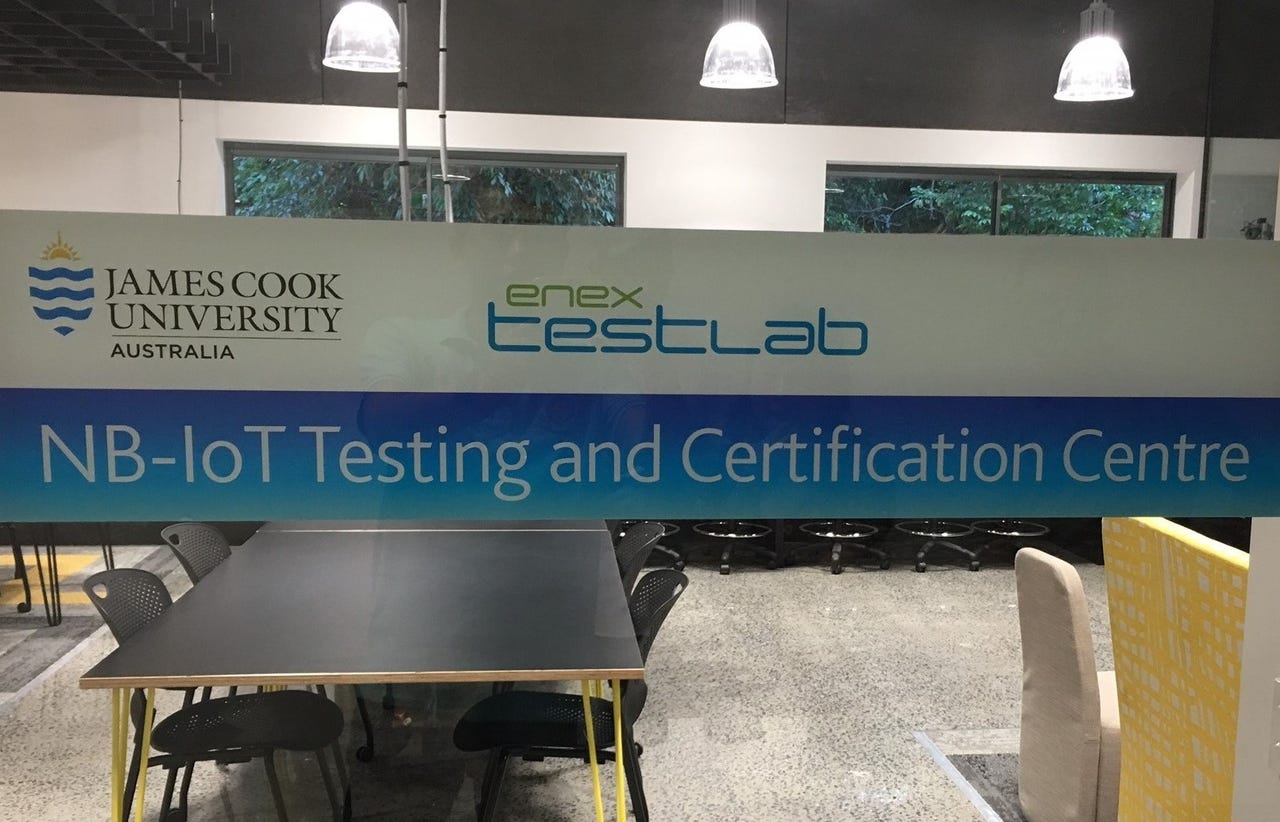Huawei to launch NB-IoT testing and certification centre in Australia


Huawei has announced that it will be helping to launch a testing and certification facility in Australia for narrowband Internet of Things (NB-IoT) devices, monitors, and sensors under an agreement between James Cook University (JCU) and Enex TestLab.
The JCU-Enex TestLab agreement is "supported by Huawei", the Chinese networking giant said, with the testing and certification centre to be established on JCU's campus in Cairns, Far North Queensland.
Using Enex TestLab, JCU will be able to certify devices according to globally recognised standards endorsed by the National Association of Testing Authorities (NATA).
Huawei will be providing the equipment and support to set up the lab, but won't partake in the testing or certification process.
"This partnership places Australia at the leading edge of NB-IoT development and implementation, and enhances JCU's IoT leadership both nationally and globally," JCU head of IoT Engineering professor Wei Xiang said.
The news follows Huawei opening an NB-IoT lab at JCU's Cairns campus in February to provide research and development opportunities around applications, smart devices, and sensor networks.
Huawei had similarly kitted out that lab with IoT technology, as well as giving the university funding for research. Its positioning within northern Australia sees it focus on smart applications for the reef, healthcare, and agriculture.
JCU also said at the time that it would be offering Australia's first IoT engineering degree. Those studying the IoT degree will have the chance to be hosted at Huawei's campuses in China and Sydney to take part in its Seeds for the Future R&D campaign.
According to Huawei, the IoT degree sees students learn a combination of "the study of electronic engineering with internet technologies, wireless communications, sensor device, industrial design, and cloud computing".
Huawei's focus on IoT saw it similarly open an NB-IoT lab in Newbury, UK with Vodafone last year, which is dedicated to NB-IoT technology and applications R&D. Huawei at the time said it would open six more across the globe.
The lab provides a testing environment for application developers and chip, module, and device manufacturers.
In Australia, Huawei also conducted a series of NB-IoT technology trials across Melbourne last year in partnership with Vodafone, which has since launched the network.
The networking giant has additionally been working on fitting out Weifang, China with its NB-IoT smart city applications and OceanConnect IoT platform, in September announcing the launch of a demo smart city there.
Weifang is using Huawei's city-level IoT platform to access, manage, and collect data from sensory equipment spread across the city in real-time, including smart lighting applications that monitor the status of street lamps, automatically adjust brightness, and detect faults. The system has been designed to save 80 percent of traditional electricity usage and 90 percent of previous maintenance costs.
Huawei then released its Intelligent Operation Centre (IOC) last month, calling it the "brain" of smart cities; it has a city dashboard for collecting, monitoring, and analysing data, and using it for managing and making decisions for city events, emergencies, security, transportation, and other services.
It makes use of an Integrated Communications Platform (ICP) bringing together big data, machine learning, and artificial intelligence (AI) technologies to provide insights.
Huawei is already helping deploy its smart city solutions to more than 120 cities across 40 countries, and last month said it is also pushing the concept of safer cities through technology and IoT applications.
Huawei has been working with the Longgang District government in China on improving public safety, Huawei Enterprise global public safety expert Augustine Chiew said, by developing a safe city solution framework focused on data collection, aggregation, convergence, and applications.
Related Coverage
Huawei and LG U+ use VR drone to deliver 5G
During a series of trials in Seoul, Huawei and LG U+ paired a VR drone with 5G customer premises equipment to deliver 1.5Gbps connectivity from 100m in altitude, while also testing IPTV 4K with a 5G tour bus.
Huawei Mate 10 Pro camera: Enhancing auto mode through artificial intelligence
Smartphone cameras have improved significantly over the last couple of years, but the majority of people still use auto mode and just like to point and shoot. Many phones have manual mode for highly customizable shots, but Huawei is attempting to combine the best of both convenience and power with intelligence.
Only 9 percent of consumers fully trust IoT devices, but many refuse to disconnect (TechRepublic)
Despite the lack of trust, it might be too late for a consumer to fully disconnect, a new Cisco report found.
How to use industrial IoT data to maximize benefits (TechRepublic)
Industrial IoT is less complex and easier to access than five years ago, according to Lionel Chocron, vice president of industrial IoT solutions for Oracle.